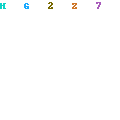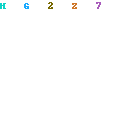Almost the first thing an investor does in deciding if he has a deal to make an offer on, is to determine the After Repaired Value (ARV). If he is wholesaling the property he needs to leave enough spread or profit margin in the property when he sells it or the buyer can't rehab it and resell it at a profit. If he is buying it to rehab himself, he can afford to pay more than if it was a wholesale deal, but he must have an idea of what he can sell it for after he rehabs it.
Investors buying to rent and hold properties are usually most concerned with the price so they can determine what their cash flow will be monthly. If they are buying single family homes to rent, they are doing this with the intent of renting until the market firms and then taking a large gain out in the years to come - a retirement nest egg so to speak.
The usual way to find comparable sales is to search the public records, MLS, or an online service that shows sales for the past few months. Comparable means the property is within a specific geographic area around the subject property and within +/- 10% of the square footage of the subject property. Over the years lenders have changed their criteria for lending and have gone from the last 12 months to the last three months in terms of recent sales. Often lenders want a comparable sale to have been on the MLS, so they can see pictures of it, or within the same neighborhood.
Usually finding comparable sales is reasonably easy but it can have some real problems if the lots are large, for example many acres each, houses vary greatly in size in the same neighborhood, other similar properties are distressed sales (short sales or foreclosures), and few or no recent sales to name a few problems. One of the most overlooked problems is mortgage fraud where a straw buyer has been involved.
A straw buyer is a person who purchases a property and tells the lender that he will be living in the property. Actually the buyer is just lending his credit to the purchase of the property. The seller has actually recently purchased the property for a much lower amount ($100,000 as an example) and is selling it to the straw buyer who believes the seller will be making the mortgage payments for him until he re-sells it at a profit.
Unfortunately the seller is a con artist who takes the $100,000 profit, rents the property and collects rent from a tenant, but never makes more than a couple of mortgage payments. This scam is set up by doing an initial purchase by the scam artist of another property at an inflated value and closing for cash (remember he is paying himself) to establish an actual sale price in the neighborhood. With this new high sale in the area he can start doing as many fraudulent transactions until he gets caught or moves on leaving the straw buyer in foreclosure. The result is a sale that can be 30% to 40% over FMV at a comparable sale for an appraiser who comes later.
While it may be an effort to look at each comparable sale in the neighborhood, it can save a buyer from overpaying on a property. The final issue that I see as being misleading in comparable sales is where the interior of a property has had massive upgrades, especially historic structures where they can turn into money pits quickly. The buyers of these rehabbed properties can over-pay because they fall in love with the property which causes this comparable sale to be distorted.
The best way to determine what you can sell, or buy, a property for is to call every listed and for-sale- by-owner property in the neighborhood, see the properties and negotiate to buy each and every one ruthlessly until you get the seller's final price. This price in each case is your real competition, not possibly unreliable comparable sales.




No comments:
Post a Comment